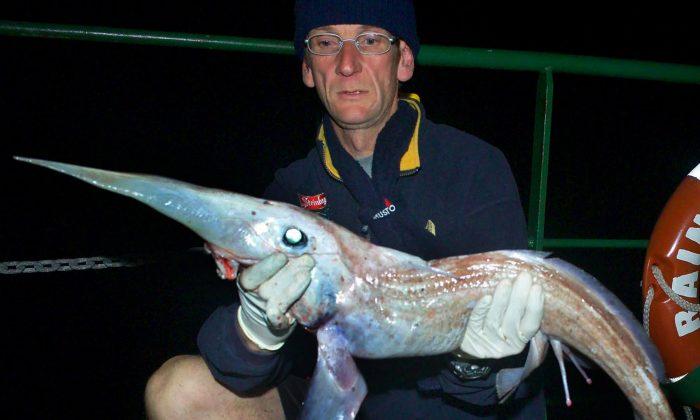Shark researchers will investigate the ocean’s darkest depths to try to get the elusive ghost shark on camera in Discovery Channel’s Shark Week on Tuesday night.
The Alien Sharks: Return to the Abyss program will explore the ocean’s depths to try to film the ghost shark, the network says.
The one-hour program starts at 9 p.m. EDT.
Discovery claims that the ghost shark has “never been seen before on camera.”
That’s confusing because the Florida Museum of Natural History says that the ghost shark, a relative of sharks, rays, and skates, has been seen plenty of times.
The ghost shark is also known as elephant fish, elephant shark, and whitefish in English.
It says that other common names are Australská sloní ryba (Czech), elefanten-chimäre (German), makorepe (Maori), masca laboureur (French), and reperepe (Maori).
The shark species resides on continental shelves, ranging from near the surface to at depths of at least 656 feet, in the southwestern Pacific Ocean along the temperate coasts of southern Australia and New Zealand.
The ghost shark has a distinctive club-like structure on the snout, and has eyes which are often green.
The shark has three pairs of tooth plates that it uses to crush hard prey items.
According to the museum, the shark are not often targeted by fishermen, although the Ngai Tahu Maori tribe traditionally and still ears the shark.
As far as danger to humans, the museum says: “Ghost sharks have a long spine located just in front of the first dorsal fin and is used to defend themselves against potential predators. Humans should take care when handling this fish to avoid injury.”





